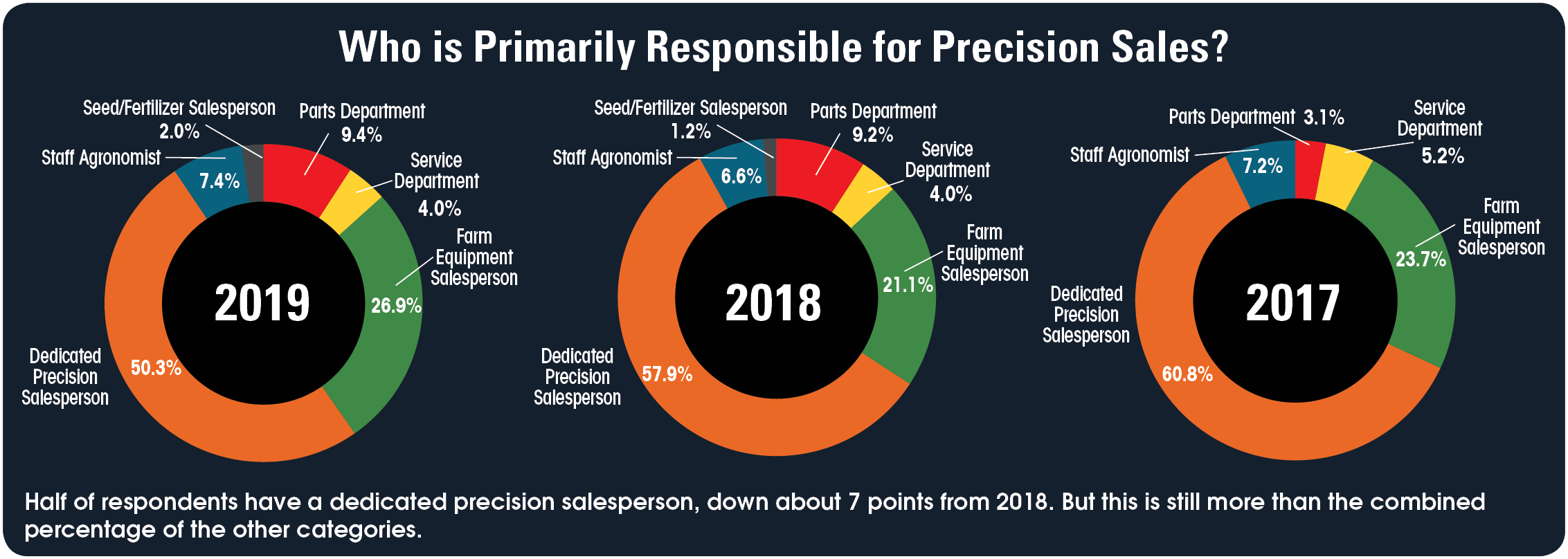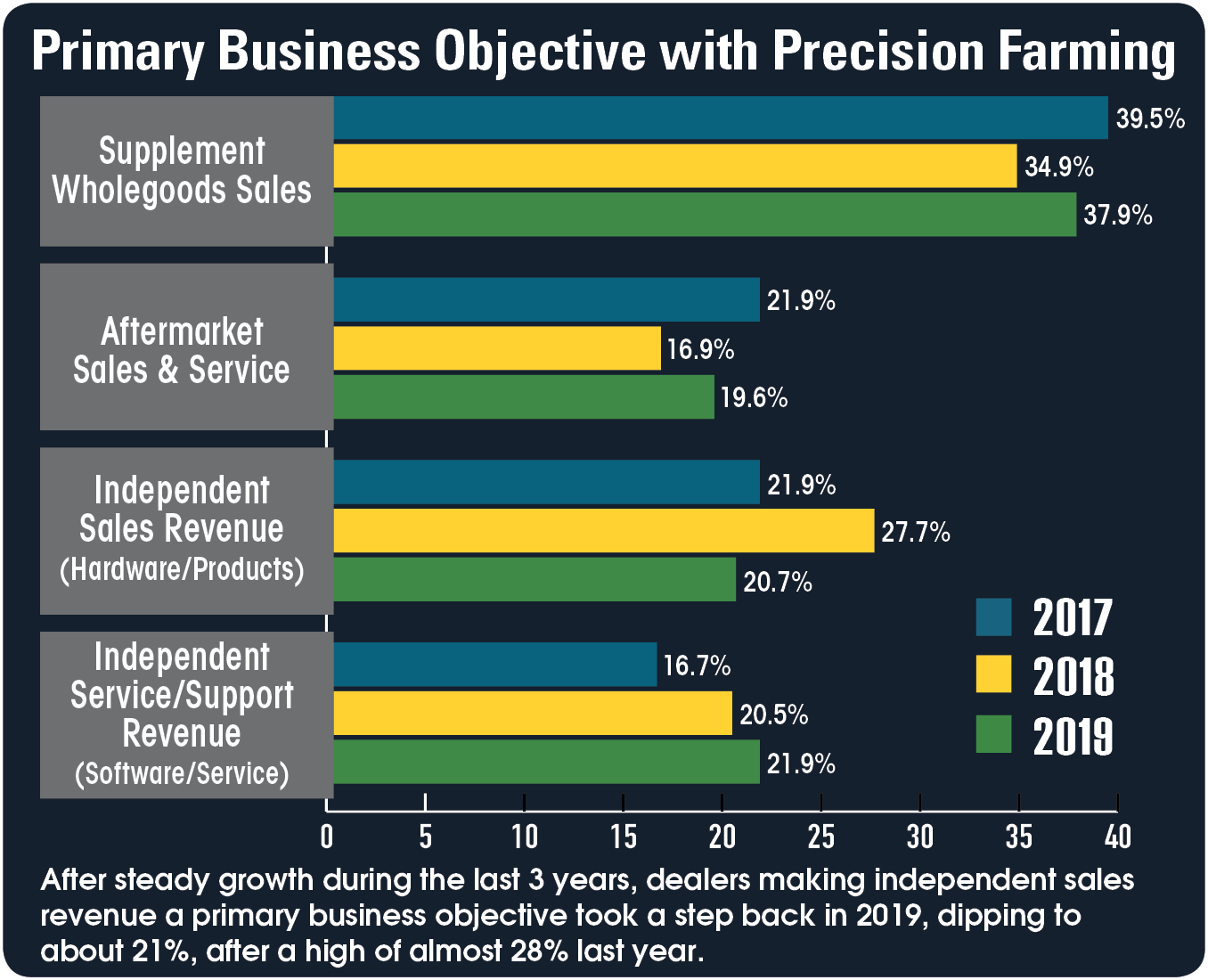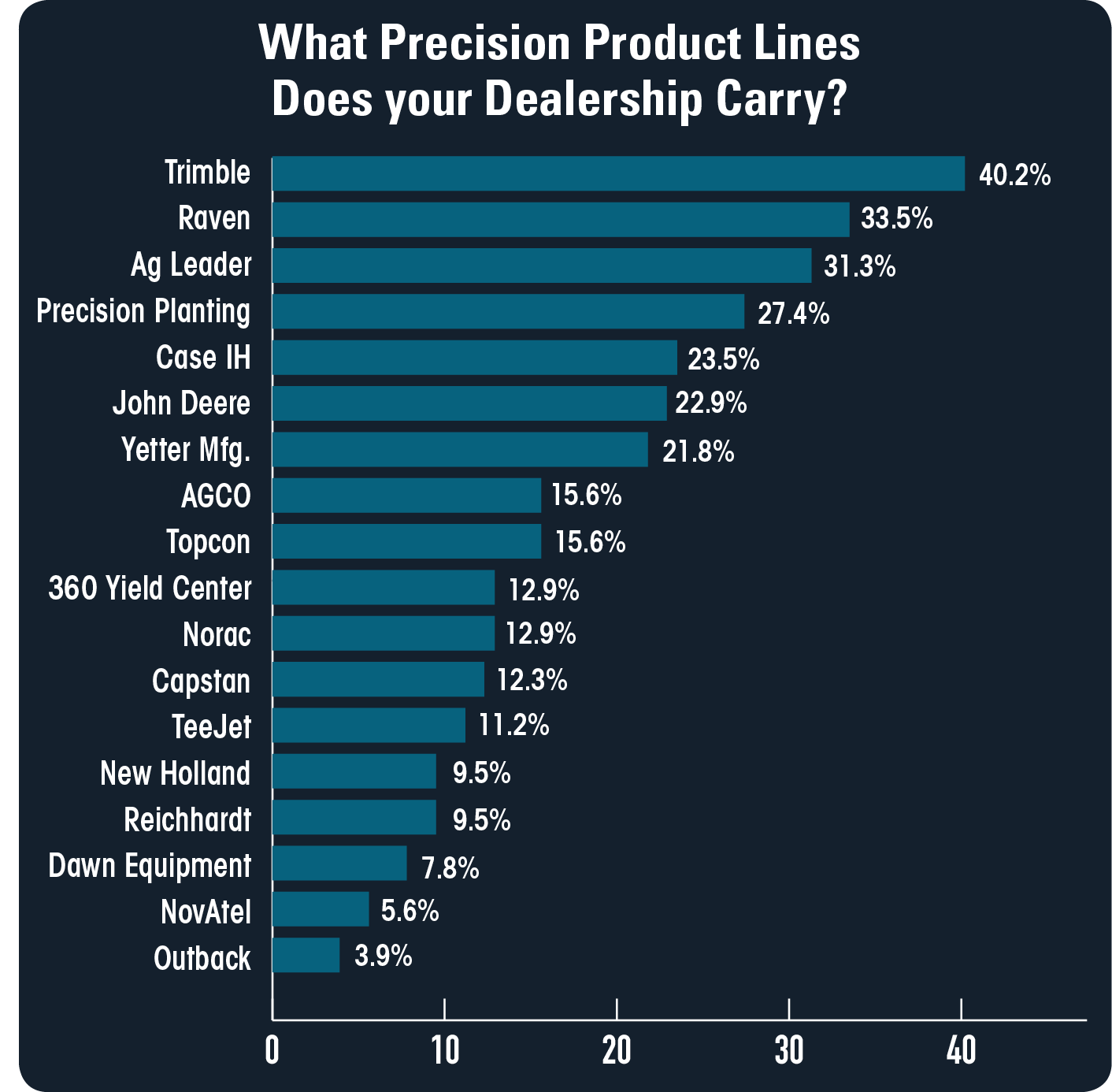The more things change, the more they stay the same, at least in terms of how dealers are selling and servicing precision farming products.
While strides have been made establishing precision as a standalone business, dealerships continue to seek a better balance between revenue generated by hardware sales and service.
One precision farming manager from a Midwest equipment dealer notes that one of the challenges they face is the improved OEM product offerings that can erode precision-specific sales on a new piece of machinery. “The precision farming department doesn’t get revenue from new tractor sales, so we will need to find new revenue streams to maintain profitability if hardware sales decline,” he says.
This mindset is reflected in a continuing trend toward a more balanced breakdown of precision revenue sources in the seventh annual Precision Farming Dealer Benchmark study. However, there are few reversals in recent trends.
For the first time in 3 years, dealers reported that half of their precision revenue came from hardware sales, curbing a downward trend that started in 2016. The most dramatic year-over-year drop was in signal subscriptions, from a high of 11.3% in 2018 to a low of 5.8% this year.
The percentage of revenue from software sales and technology service/support also both dipped, albeit slightly (see charts below), while agronomic or data management service ticked up by about 1% over 2018.
The way precision products are sold saw some subtle shifts in this year’s study. Most notable was the continued 3-year downward trend of aftermarket sales of technology, to a low of about 41.6% in 2019.
Factory installed technology ticked up for the second straight year to 37.8%, while dealers selling used precision equipment dipped for the third straight year to a low of 5.2%.
Interestingly, 15.4% indicated they sell precision technology through other methods, which could include service-only sales or agronomic support.

Supplemental Sales
For the seventh consecutive year, the majority of respondents say their primary business objective with precision is to supplement wholegoods sales. After a 3-year decline, to a low of about 35% in 2018, the percentage rebounded to near 38% this year, though still well behind the nearly half of dealers who said precision sales were primarily to supplement wholegoods sales in 2016.
Independent service and support, to include software upgrades or installs, continued to increase for a fourth year, to a high of almost 22% in 2019. Though a slow climb, the momentum is encouraging as dealers continue to try and get a foothold with customers on establishing a “for fee” service model.
Platte Valley Equipment, a 4-store John Deere dealership in Nebraska, launched its E3 (Enable, Engage and Educate) service program in 2015, which is an upgrade from its basic AMS support program, priced at $2,900 per year and covering up to 3 systems to include basic technical support and software updates.
The more comprehensive E3 program, priced at $9,400 per year, includes planter and combine optimizations, RTK access, JDLink support, equipment inspections, free freight and discounts on parts from any of the dealership’s 4 stores.
“We noticed that the customers were already paying for a lot of this stuff separately so we thought we could make it into a package deal and that way they’re only paying one lump sum a year,” says Cory Allely, AMS specialist. “It’s worked out nicely because we can help them through every part of the growing season, equipment inspections, software updates and then getting into the agronomy side of it with some of our other programs.”
After steady growth during the last 3 years, dealers making independent sales revenue a primary business objective took a step back in 2019, dipping to about 21%, after a high of almost 28% last year (see chart at right).

Collaborative Effort
Cross-training, specifically to troubleshoot low-level technology problems, has become an essential part of many dealerships’ onboarding of new service or precision technicians.
With precision specialists stretched thin particularly in spring and fall, having another set of hands, eyes or ears to assist customers is changing how dealers delegate employees during busy seasons.
Dealerships that have a separate precision farming department dropped to a low of 44.6% in 2019, down 15% from last year. Looking at allocation of precision personnel, about 40% or respondents say their precision staff are part of the service department.
Another 30% are a within a separate or independent precision department and another 23% are part of the sales department. Only about 3% are allocated to the parts department
Looking more specifically at precision sales (see p. 14), about 50% of respondents have a dedicated precision salesperson, down about 7 points from 2018. But this is still more than the combined percentage of dealers who primarily sell precision through a farm equipment salesperson (26.9%), the parts department (9.4%), a staff agronomist (7.4%) and the service department (4%).








